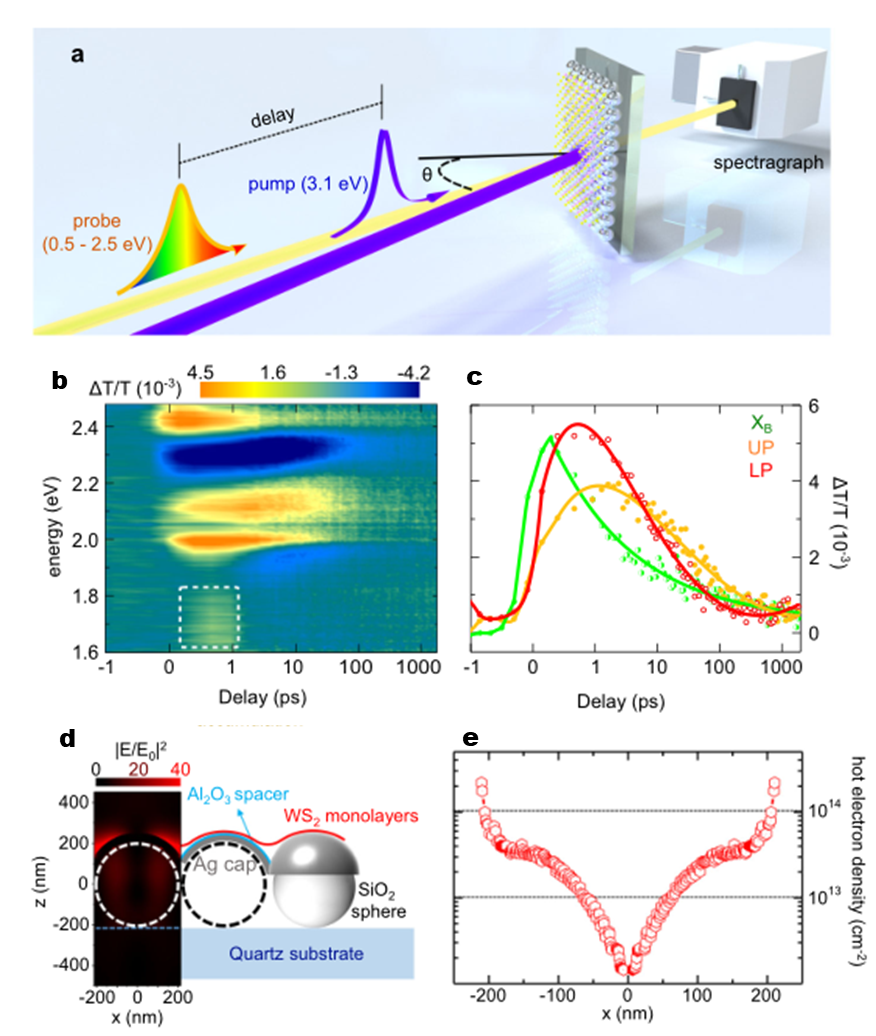Bandgap Control via Doping of Plasmonic Hot Electrons
来源: 作者: 发布时间:2022-10-13Bandgap control is of central importance for semiconductor technologies. The traditional means of control is to dope the lattice chemically, electrically or optically with charge carriers. Chen et al. demonstrate for the first time a widely tunable bandgap (renormalisation up to 650 meV at room-temperature) in two-dimensional (2D) semiconductors by coherently doping the lattice with plasmonic hot electrons.

(a) Schematic of the experimental setup. (b) Bandgap renormalization effect in the transient absorption measurements. (c) Hot electron doping effect.
Two-dimensional (2D) semiconductors, such as transition metal dichalcogenides, have direct bandgap at their monolayer limit, exhibiting tremendous potential in development of next-generation nanoscale devices. Like in their bulk counterparts, bandgap control plays a vital role in 2D semiconductor technoglogies, since it enables the creation of desirable optoelectronic properties that are required in numerous applications, ranging from lasers to modulators, photodetectors and photocatalysis. The traditional means of control is to dope the lattice chemically, electrically or optically with charge carriers, the practicality of which is, however, limited by many factors, e.g. the irreversible bandgap modification, contact-type control and requirement of ultrastrong pump.
The recent work by Chen et al. shows that one can effectively modify the electronic band structures of 2D semiconductors by establishing coherent strong coupling between the semiconductor excitons and a plasmonic resonator. In particular, plasmonic resonators are metallic nanostructures that support collective oscillation of electrons, known as plasmons. The excitation of plasmons can produce hot electrons, i.e. highly energetic electrons with non-equilibrium thermal distributions, which, when plasmons are strongly coupled to 2D semiconductors, can repeatedly dope the lattice along with the coherent plasmon-exciton energy exchange. As a result, the bandgap of 2D semiconductors is significantly renormalised and the renormalisation can be easily altered via detuning plasmons from excitons. technologies, such as on-chip laser sources and optical quantum memories.
References
[1] Y.-H. Chen et al., Nat. Commun. 9, 466(2021).




